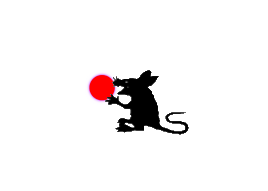Patrick Keating
Figueroa’s Lines
“Figueroa’s Lines” looks at eleven clips photographed by the great Mexican cinematographer Gabriel Figueroa: six from his collaborations with the director Emilio Fernández and five from his collaborations with the director Luis Buñuel. The video draws inspiration from previous works of audiovisual scholarship that study pictorial composition, especially those that employ lines and shapes to highlight the key compositional features of the underlying clips. Examples include “L’Eclisse: Lines,” by Hannah Leiss, “Sherlock: The Art of Symmetry,” by Celia Gómez, and “Jacques Tati’s Playtime: How to Make a (Critical) Joke,” by Miklós Kiss.
You might notice that some of my clips are a bit blurry. When I was editing the video, I tried to keep in mind Nicolas Poppe’s provocative argument that video essayists should not insist on technical perfection.1 Poppe’s argument is political. If video essayists only make videos when they can find a pristine Blu-Ray of the films in question, then audiovisual criticism will end up replicating the market-driven logic that makes Hollywood films and European classics so accessible, while leaving films from other regions, such as the Global South, deeply underrepresented. Drawing inspiration from Julio García Espinosa’s essay “Por un cine imperfecto,” Poppe writes, “Imperfect videographic criticism works with the muffled sound, distorted images, unnecessary watermarks (often from their broadcast on television), of these texts to make imperfect arguments that deepen our understanding of them.” I have pulled my clips from old DVDs, borrowed recordings, and the internet. I must confess that there was a part of me that really wanted to touch up the contrasts some more, but I resisted the temptation as best I could, allowing the tension between the original sources and my added effects to remain visible.
The video is only two minutes long. If it were longer, I might have added some caveats, perhaps admitting the existence of various exceptions to the basic comparison I propose. My hope is that this more compact form will allow the relevant contrasts and parallels to come across more vividly—vividly enough that viewers might seek out the films in question and notice some of these compositional techniques for themselves.
Which brings me to a final note: As a cinematography historian, I can heartily recommend seeing Río Escondido: a top-tier masterpiece of the art.2
You might notice that some of my clips are a bit blurry. When I was editing the video, I tried to keep in mind Nicolas Poppe’s provocative argument that video essayists should not insist on technical perfection.1 Poppe’s argument is political. If video essayists only make videos when they can find a pristine Blu-Ray of the films in question, then audiovisual criticism will end up replicating the market-driven logic that makes Hollywood films and European classics so accessible, while leaving films from other regions, such as the Global South, deeply underrepresented. Drawing inspiration from Julio García Espinosa’s essay “Por un cine imperfecto,” Poppe writes, “Imperfect videographic criticism works with the muffled sound, distorted images, unnecessary watermarks (often from their broadcast on television), of these texts to make imperfect arguments that deepen our understanding of them.” I have pulled my clips from old DVDs, borrowed recordings, and the internet. I must confess that there was a part of me that really wanted to touch up the contrasts some more, but I resisted the temptation as best I could, allowing the tension between the original sources and my added effects to remain visible.
The video is only two minutes long. If it were longer, I might have added some caveats, perhaps admitting the existence of various exceptions to the basic comparison I propose. My hope is that this more compact form will allow the relevant contrasts and parallels to come across more vividly—vividly enough that viewers might seek out the films in question and notice some of these compositional techniques for themselves.
Which brings me to a final note: As a cinematography historian, I can heartily recommend seeing Río Escondido: a top-tier masterpiece of the art.2
1. Nicolas Poppe, “For an Imperfect Videographic Criticism,” unpublished conference presentation, Society of Cinema and Media Studies Conference, 2019. Thanks to Nic for sending me a copy of this talk.
2. For a definitive discussion of Figueroa’s compositional strategies, see Charles Ramírez Berg, The Classical Mexican Cinema: The Poetics of the Exceptional Golden Age Films (Austin: The University of Texas Press, 2015), 91-132.
2. For a definitive discussion of Figueroa’s compositional strategies, see Charles Ramírez Berg, The Classical Mexican Cinema: The Poetics of the Exceptional Golden Age Films (Austin: The University of Texas Press, 2015), 91-132.
Patrick Keating is a Professor in the Department of Communication at Trinity University in San Antonio, where he teaches courses in film studies and video production. He is the author of several books on cinematography, including The Dynamic Frame: Camera Movement in Classical Hollywood. His most recent book is a close analysis of Alfonso Cuarón's 2004 film Harry Potter and the Prisoner of Azkaban. His video essays may be found on Vimeo.
Notes:
